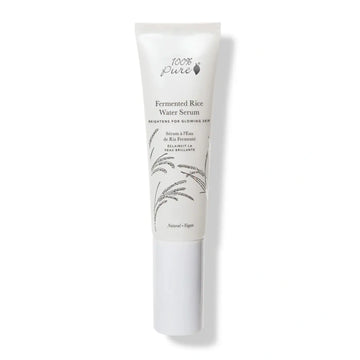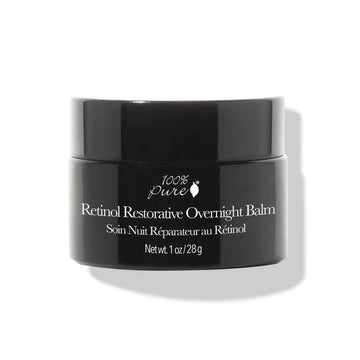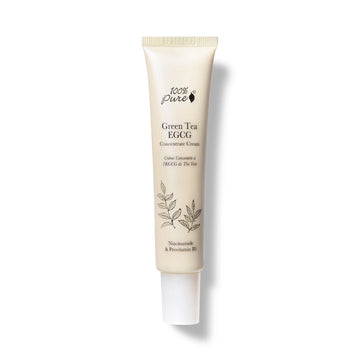Shield Your Skin from the Digital Age: Mastering Blue Light Defense
Posted on September 06, 2024 Written by: 100% PURE®
In our digital world, balancing screen time with skin health is becoming a real challenge. Did you know that the blue light from our screens can impact our skin, causing issues like premature aging and hyperpigmentation? It's more than just eye strain we're dealing with—our skin is at risk too. But don’t worry; there are ways to protect your skin from this hidden threat.
Let's dive into effective strategies to safeguard your skin against blue light exposure.
Understanding Blue Light and Its Impact on Skin
Blue light, a high-energy visible (HEV) light, is part of the visible light spectrum that we encounter daily. It primarily comes from the sun but is also emitted by digital screens like smartphones, tablets, and computers.
Unlike UV rays, blue light penetrates deeper into the skin, reaching the dermis and affecting skin cells by generating free radicals. This can lead to a plethora of skin issues. Natural blue light from the sun is balanced by other wavelengths, while artificial blue light from screens is more concentrated, increasing the potential risk to our skin when overexposed.
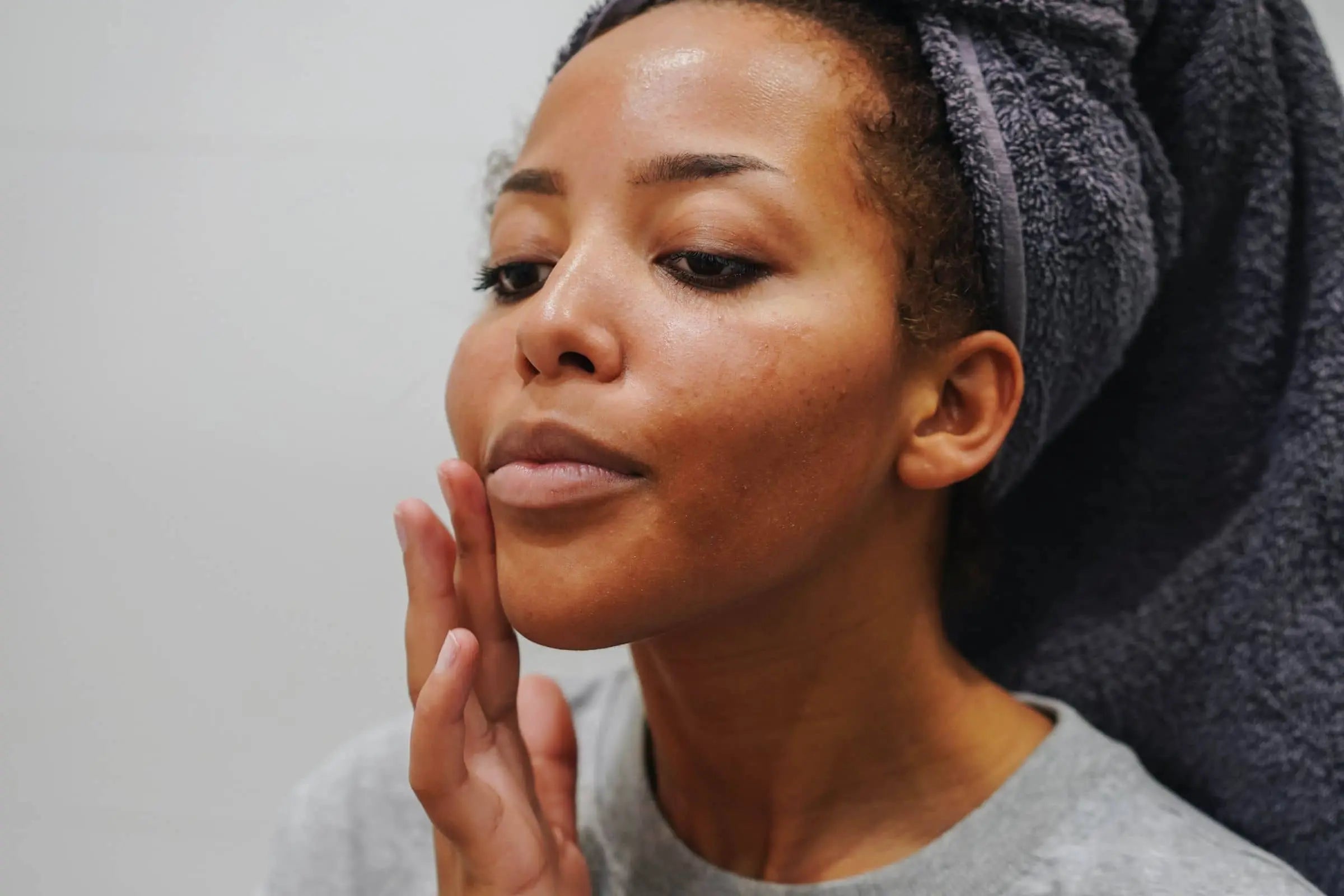
The Consequences of Blue Light on Skin Health
Blue light exposure, particularly from digital screens, can have several detrimental effects on skin health. One of the most significant impacts is premature aging, leading to what some refer to as "digital wrinkles." This occurs due to oxidative stress caused by blue light, which damages collagen and elastin, the proteins responsible for maintaining skin's firmness and elasticity. Moreover, blue light can trigger hyperpigmentation and create uneven skin tone by increasing melanin production, especially in people with darker skin tones who are more prone to developing pigmentation issues.
Additionally, blue light exposure can weaken the skin's barrier function, compromising its ability to retain moisture and protect against environmental aggressors like pollution. This weakened barrier can make the skin more susceptible to irritation and dryness. There is also a potential link between blue light exposure and acne or inflammation, as the light can exacerbate existing skin conditions, leading to increased redness, irritation, and breakouts over time.
Identifying Signs of Blue Light Damage
Early signs of blue light damage include fine lines and wrinkles appearing sooner than expected. You may also notice changes in skin texture and firmness, with the skin feeling less smooth and more prone to sagging.
Persistent redness or irritation can be another indicator, as blue light can exacerbate inflammation and weaken the skin barrier. Increased sensitivity to skincare products is also a common sign; products that were once effective might start to cause discomfort or irritation, signaling that the skin's resilience and overall health have been compromised.
Creating a Blue Light Defense Strategy
To protect your skin from blue light damage, consider making adjustments to your daily skincare routine. Look for products containing protective ingredients like antioxidants (vitamins C and E) and niacinamide, which help neutralize free radicals.
Both physical and chemical sunscreens can provide blue light protection, but physical blockers like zinc oxide offer broader coverage. Additionally, incorporating lifestyle changes such as reducing screen time, using blue light filters, and maintaining a healthy diet rich in antioxidants can help minimize exposure and bolster skin defenses against blue light damage.
Key Ingredients for Blue Light Protection
Antioxidants: Vitamin C, E, and Niacinamide
Neutralize free radicals caused by blue light exposure, helping to prevent premature aging and skin damage.
Iron Oxides and Zinc Oxide
Act as physical sunscreens that block both blue light and UV rays, offering comprehensive protection against skin damage.
Algae and Marine Extracts
Strengthen the skin barrier and provide hydration, protecting the skin from blue light's drying and damaging effects.
Plant-Based Protectors: Red Algae, Cocoa Seed Extract
Shield skin from oxidative stress and inflammation, helping maintain skin health and resilience against blue light exposure.
Tech Solutions for Reducing Blue Light Exposure
1. Utilizing blue light filtering apps and screen protectors on your devices can greatly reduce blue light exposure.
2. Adjusting device settings to reduce brightness and using night mode also helps protect both your eyes and skin.
3. Taking regular screen breaks is essential, as stepping away from screens allows your skin to recover and prevents overexposure to blue light, reducing the risk of long-term damage.
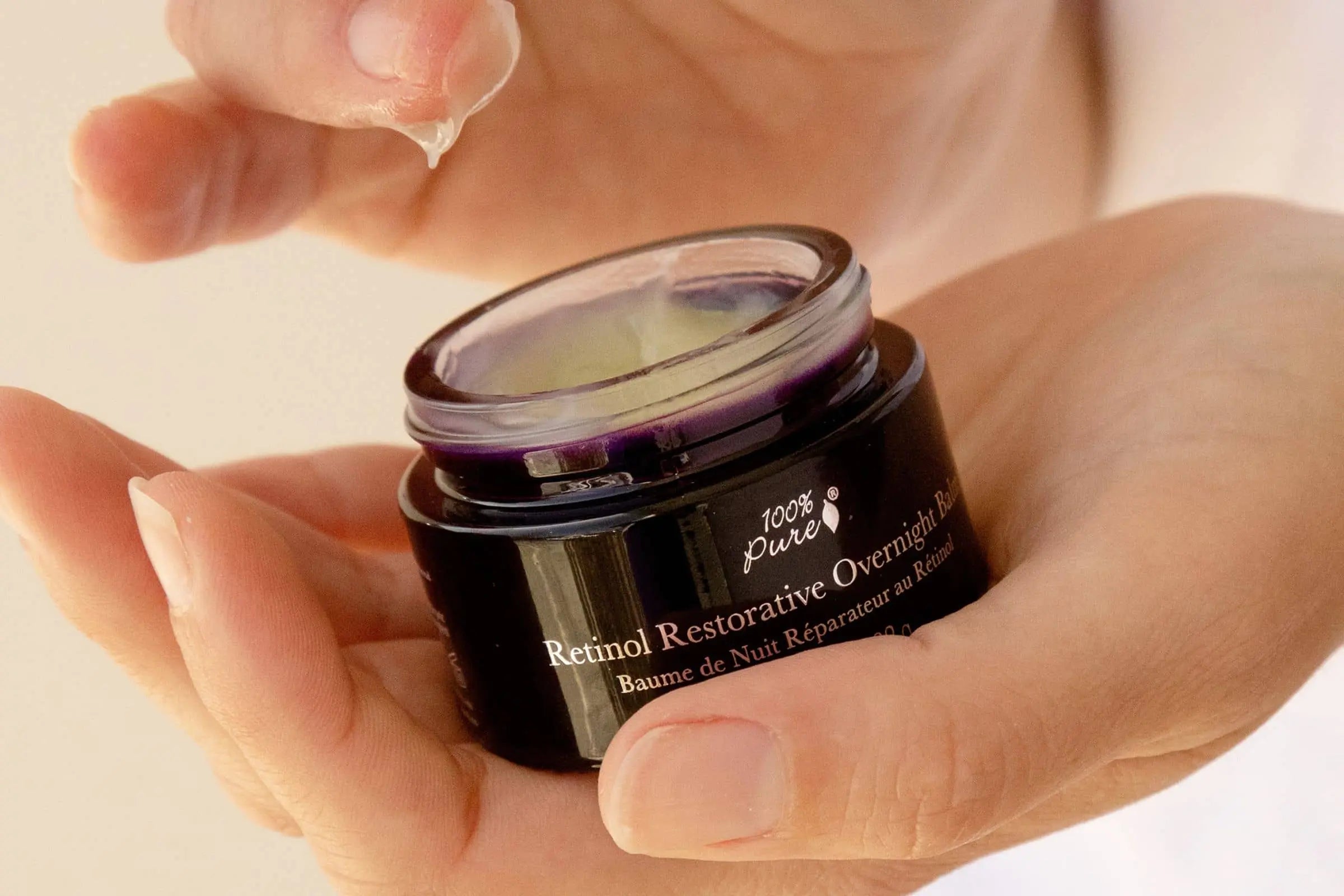
Nighttime Skincare for Blue Light Recovery
Nighttime is a crucial period for repairing skin that has been exposed to blue light throughout the day. Ingredients like retinol, hyaluronic acid, and peptides are known to boost overnight skin recovery by promoting cell turnover and hydration.
Additionally, creating a sleep environment that supports skin health—such as using a humidifier and maintaining a cool, dark room—can enhance the skin's natural repair processes and mitigate the effects of blue light damage, ensuring you wake up with refreshed, healthier skin.
Holistic Approaches to Combating Blue Light Effects
Nutrition for Skin Protection: Eating a diet rich in antioxidants and omega-3 fatty acids helps protect skin cells from blue light damage and supports overall skin health.
Stress Management Techniques: Practices like meditation and deep breathing reduce stress, which can otherwise exacerbate skin damage and inflammation caused by blue light.
Role of Exercise in Enhancing Skin Resilience: Regular exercise improves blood circulation, delivering nutrients and oxygen to the skin, enhancing its ability to recover from and resist blue light exposure.
100% PURE Products for Blue Light Protection
100% PURE skincare products are designed to shield your skin from the detrimental effects of blue light. Our products blend natural ingredients with cutting-edge technology to provide comprehensive protection and repair, addressing issues like premature aging, hyperpigmentation, and uneven skin tone caused by prolonged screen exposure.
Fruit Pigmented® Tinted Moisturizer: This multitasking moisturizer offers daily tinted coverage while shielding your skin from blue light exposure, giving you a flawless look and added protection in one step.
Fermented Rice Water Serum: Known for its brightening properties, this serum helps even out skin tone and diminish the appearance of hyperpigmentation resulting from blue light exposure.
Retinol Restorative Overnight Balm: Ideal for nighttime use, this balm supports skin repair and rejuvenation, tackling damage and promoting cell turnover as you sleep.
Caffeine Mask: Refresh and protect tired skin with this mask, designed to energize and revitalize skin exposed to screens throughout the day.
Green Tea EGCG Concentrate Cream: Packed with antioxidants, this cream provides a robust defense against digital aging, helping to protect your skin from the long-term effects of blue light.
Frequently Asked Questions (FAQs)
How does blue light from screens differ from sunlight in terms of skin damage?
Blue light from screens differs from sunlight mainly in its intensity and exposure duration. While sunlight includes UV rays that directly damage the skin’s DNA and accelerate aging, blue light primarily penetrates deeper into the skin, potentially causing oxidative stress, pigmentation, and premature aging. Sunlight is more intense and damaging in short bursts, whereas blue light from screens is a longer, more constant exposure that can contribute to cumulative skin damage over time.
Can blue light protection be combined with regular sunscreen?
Yes, blue light protection can and should be combined with regular sunscreen. Sunscreens protect against UV rays, while blue light protection products target the effects of digital screen exposure. Using both ensures comprehensive protection from various environmental factors that contribute to skin damage, such as UV rays and blue light, offering a more complete defense against premature aging and skin issues.
Are certain skin types more susceptible to blue light damage?
Yes, certain skin types may be more susceptible to blue light damage. Individuals with lighter skin tones may experience pigmentation and premature aging more readily due to lower melanin levels. Additionally, those with sensitive or compromised skin barriers may find blue light exacerbates redness and irritation. People with pre-existing skin conditions like hyperpigmentation or inflammation may also be more vulnerable to the adverse effects of blue light.
How long does it take to see improvements after implementing blue light protection?
The time it takes to see improvements after implementing blue light protection can vary. Generally, you may start noticing benefits, such as reduced redness and improved skin texture, within a few weeks of consistent use. More noticeable changes like reduction in pigmentation or wrinkles can take several months of regular use and a combination of protective and reparative skin care practices to achieve noticeable results.
Can blue light-blocking glasses help protect facial skin?
Blue light-blocking glasses primarily protect the eyes from the harmful effects of blue light, but they do not provide direct protection for the facial skin. However, reducing overall blue light exposure can help mitigate some of the indirect effects on the skin, such as reduced strain and potential redness around the eyes. For comprehensive facial protection, using skincare products specifically designed to combat blue light damage is recommended.
- Tags: September-2024, Skin Care, skincare
We carefully hand-select products based on strict purity standards, and only recommend products we feel meet this criteria. 100% PURE™ may earn a small commission for products purchased through affiliate links.
The information in this article is for educational use, and not intended to substitute professional medical advice, diagnosis, or treatment and should not be used as such.














